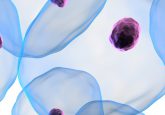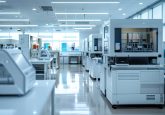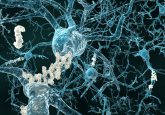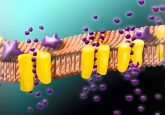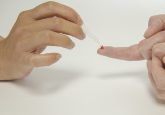Interview with Shalini Prasad on the development of point-of-care devices
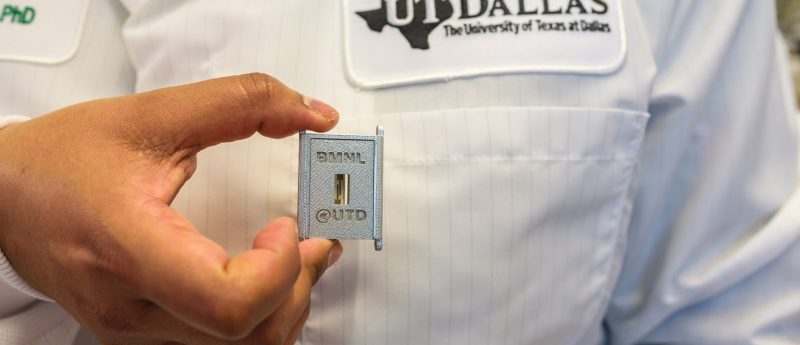
In this interview, Shalini Prasad from the University of Texas at Dallas (TX, USA), discusses her current research in the development of a multiplex diagnosable wearable that can rapidly and reliably monitor three interconnected compounds associated with Type 2 diabetes and outlines why she thinks there has been a rise in point-of-care diagnostics.
1Could you please introduce yourself?
My name is Shalini Prasad and I am a Professor in bioengineering at the University of Texas at Dallas (TX, USA) and I am also the Director of the biomedical microdevices and nanotechnology laboratory (TX,USA). I am an electrical engineer by training and I have been working on designing sensors for wearables and point-of-care diagnostic applications, with also some interest in environmental sensoring over the last few years.
2What are you currently working on?
The most exciting breakthrough from my lab in the last few months has been the development of a multiplex diagnostic wearable. What I mean by this is a small sensor patch that can look for, detect and quantify three specific molecules associated with the metabolism of the body: Glucose, cortisol and a cytokine marker – interleukin-6. The idea is to detect these three molecules from ambient perspired sweat either from people sitting in conditioned rooms or people working outside in harsh environments. Whether it is in the desert or at a beach the idea is to look for these three molecules, detect and quantify them for concentration, as well as to monitor them dynamically. We do this by taking multiple readouts over a 24 hour period and reporting it through a smart phone or an electronic interface.
3How does the wearable device quantify these biomarkers for Type 2 diabetes?
The challenge to date in terms of wearables has been that a truly diagnostic wearable really doesn’t exist in the commercial space. At the research end there has been a lot of work towards essentially using molecules that are there in our sweat and essentially establishing levels or thresholds to see whether a particular molecule has been upregulated and is at a higher concentration than what is perceived as the normal range. Then correspondingly, connecting that to some physiological condition associated with the body. The best examples are heart rate and even ECG measurements that can be done through a wearable interface. However, when it comes to looking for specific molecules in sweat the challenge has been that these are at much lower concentrations and doses than what you would expect to see in your blood/blood serum. Hence, the wearable sensor has to not just be ultrasensitive, it also needs to calibrate for the false-positives and the false-negatives, so the negative predictive value of this test needs to be such that it is a robust diagnostic or measure. In that context what we did was we essentially engineered the architecture of the sensor’s surface, such that it actually works very similar to a sponge and it can specifically localize these three specific molecules. We are using a spectroscopic technique whereby we think of it as though you are tuning into a particular station on your radio – it’s very similar to that, so you are zoning in on specific frequencies associated with the detection of these three molecules. Once you have essentially tuned into the molecule of interest then we are able to use standard electrical measures to be able to quantify what is essentially an impedance change to a concentration recorded as a concentration number. We can do this dynamically in real-time from a technological perspective, which means you can get a readout every 60 seconds, and the sensor would be able to report the concentration of that particular molecule in sweat at that level of resolution.
4Is this a new technology?
This is a new technology in context to the fact that there is really no diagnostic measure that is going to be available in the research and in the commercial space. It actually stems from the idea of standard electrochemical impedance spectroscopy that we have essentially modified and engineered, such that we can get specificity and not lose resolution in the measurement, as the medium of the body fluid gets more and more complex. This technology will work just as well whether you are doing it in blood, urine or sweat. And the other set of engineering that we have added to this is that it is able to work in ultra-low volumes. If you’re thinking of urine or blood then volume is not an issue, but with sweat it is an issue because depending on the geographical location people may or may not produce a sufficient amount of sweat. This is a challenge in terms of developing diagnostic wearables as there has to be a specific minimum volume similar to a single drop of blood from a finger prick, which ranges from approximately 30–50 μl. Volumes of this nature are challenging, so our strategy has been how to essentially overcome these fluid issues and couple it with the electronic measurement capability, to get this highly specific and sensitive measure.
5What impact could this device have for patients?
It works at two ends of the spectrum in terms of patient use. Patients who use connected health and smart health whereby most of the information gets integrated digitally or electronically, and reporting happens instantaneously or relatively in real-time, are usually in first world regions like the US or Europe. In that context, there is a lot of value for having these dynamic readouts, in terms of managing patient meal plans or exercise – especially for chronic diseases and particularly Type 2 diabetes. On the other end of the spectrum there are a lot of people in countries such as India and China where there is a high prevalence of diabetes but low access to self-screening technologies. In that context, this would essentially allow for access and reach, to identify new patients and allow the physician or healthcare provider to have a little more control. This is in terms of managing and giving awareness to the patient in terms of the challenge that a chronic disease such as diabetes would pose in those areas.
6Do you think the use of ionic liquids is going to increase in bioanalysis?
The use of ionic liquids for multiple non-biomedical applications has been around for the last 20 years, but we figured out a way to use these ionic liquids to do two things. One is to essentially customize sweat production that a person would have in different environments, whether it is in desert conditions or highly humid conditions, so the whole spectrum. So how do you adjust for the amount of sweat so that it spreads and distributes uniformly so it doesn’t saturate the sensor, but is also sufficient to allow for a good read? The ionic liquid, because of its buffering mechanism, allows for some of this and we have essentially engineered a way to integrate this ionic liquid onto the microstructure of the sensor. The second aspect of the ionic liquid is that it enhances the lifetime of the sensor and this is where I think an option of ionic liquids into wearable bioanalysis would have a significant impact. This is because this is the first wearable where you are getting a measurement for up to 168 hours, which is basically a week and you can have the resolution of getting data every 60 seconds. This is a lot of measures that you can get in 168 hours. This happens primarily because of the buffering capacity that the ionic liquid offers and these two aspects of ionic liquids in conjunction with spectroscopy allows us to have a sensitive and specific measurement. This allows us to have good quantification of multiple biomolecules in the same sample.
7Why do you think there has been a rise in point-of-care diagnostics?
The increase in use of point-of-care diagnostics, I think correlates very well to the use of smart phone technology. With the adoption of smart phone from a user standpoint or the consumer standpoint, having more information on that smart phone interface seems to be an expectation rather than something that is going to be a novelty. As a result, users expect to have a diagnostic wearable that can essentially report and dynamically monitor multiple health conditions. This is true for children all the way down to elementary school, who are engaged in technology, all the way up to the people who are very focused on fitness and who are very interested in monitoring various aspects of their health through the various gear that they wear. On the other end, because smart phones have reached into countries with emerging and developing economies there is an opportunity now to integrate healthcare and healthcare management into this smart phone platform. This is why I think the time is right to essentially add these diagnostic wearables and enhance the capability of these point-of-care diagnostics and offer it at a lower price point, so that it becomes affordable and accessible to more people.
8What are your big plans for the next few years? What further investigations do your team have planned?
In the short term, we have a big vision for this durable wearable diagnostic that we have developed. We see this as a two stage market entry project. Essentially as a consumer project, this would allow familiarity with this technology, similar to a lot of wearable gear, such as fitbit. We hope that by going through the regulatory routes this becomes a truly diagnostic wearable, whereby it would impact healthcare through integrating the outcome to physician choices in decisions for their patients. The other aspect is essentially using the device as a low cost point sensor, which can be introduced into emerging countries. We are actively talking and facilitating funding organizations, allowing us to run these clinical trials and essentially pushing this technology forward. Broadly our big vision would be developing lifestyle monitoring for various other diseases as well. We are interested in correlations between alcohol consumption and the impact on diabetes as well as the impact of stress and its association with inflammatory pathways. We are also interested in monitoring people going through cancer therapy and so on.

